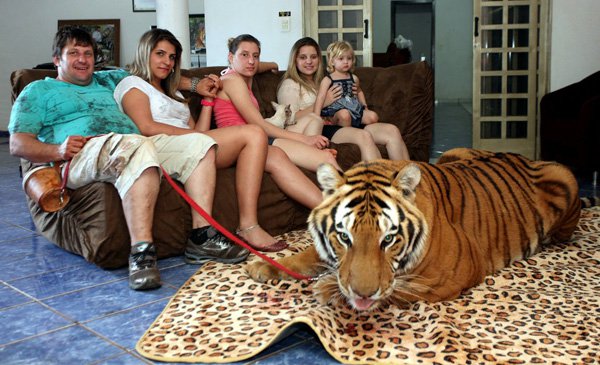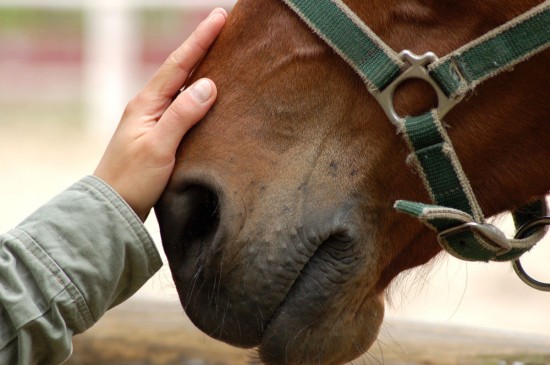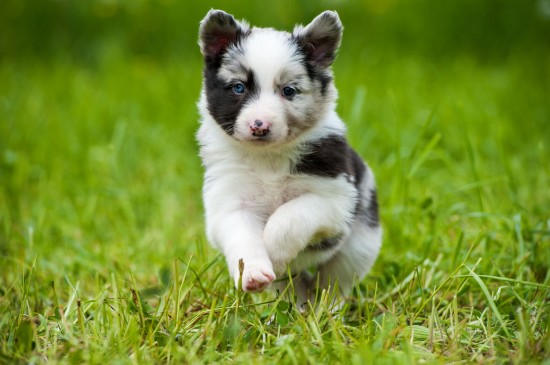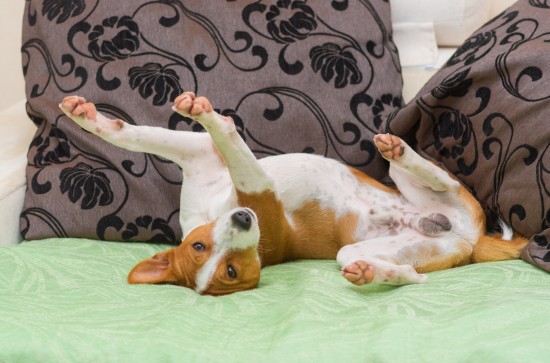
Dog-child interaction is the single most important issue to deal with if you have a child and a dog. Children love dogs but dogs don’t always love children. When you bring home a new puppy, your child should be trained together with your dog. Dog owners need to remember that it takes two to tango. Children aren’t often taught how to treat a new doggy which can make his life a living hell. This is not only torment for your dog but can be dangerous to your child. Never trust your child alone with ANY dog, regardless of how gentle that dog is known to be. A child tends to know just which buttons to press to turn the gentlest animal into a dangerous beast. Most dogs initially feel threatened by a child because they are at eye level, they have high-pitched voices and make vigorous movements. The dog senses that the child is somewhat unpredictable. Dog-child interaction should be monitored in order to make sure that child and your dog are getting along.
What you should teach your child
What you should know as a dog owner
If you have a dog and are expecting a baby
First off, if you haven’t read the information above this subhead, go up and do so now. The above information will provide you with all the do’s and dont’s in preparing your dog for an addition to the family. If your dog has never been around a child for a long period of time, you will have the next nine months to get him used to it. Dog-child interaction is crucial at this stage.
Invite a niece, nephew, cousin, neighbor, etc. over for a few hours a week (Preferably a child who still wears a diaper. This will get the dog used to baby smell as well).
This idea satisfies two objectives: it will get your dog used to having a child around; and will develop your dog’s behavior in such a way which allows him to have a dog-child relationship with almost any child. Teach your dog how to behave around a child using much of the information discussed above.
Do not wait until the baby is born in order to make adjustments. Try to make as many adjustments as you can before the baby arrives, this way he won’t be hit with all these changes at once. For instance, if you will have to move furniture around to accommodate a high chair or a playpen, this may affect the placement of your dog’s bed and bowl. If so, make this move before the baby arrives. This will lessen the impact it will have on your dog and is less likely to affect the dog-child relationship.
Once you have the nursery set up for the baby, teach your dog that he will not be allowed in the room, at all. If he learns this before the baby comes, it will lessen the dog’s resentment towards the baby.
Get your dog used to the sounds a baby makes by playing a recording of a baby cooing and crying. Play this recording in the nursery in order to indicate to your dog where exactly he can expect these sounds to be coming from.
Make accommodations for your dog for the day you go into labor. He may have to spend hours alone before daddy’s comes home from the hospital.
When it’s time to bring the baby home, have someone go into another room with the dog while you put the baby down and get settled. Then bring the baby out and introduce the dog to the baby. The dog will probably give the baby a sniff or two and seek your attention. After all, he hasn’t seen you in days. At this point, it would be a good idea to put the baby down and spend some time playing with the dog. Show him he’s still loved. This will aid in the development of the dog-child relationship.
Your dog may require some extra attention in the first days of welcoming the baby. This will keep him from resenting the baby for stealing all the attention. Give him your undivided attention.
Allow your dog to be present when changing or feeding the baby.
Never yell at your dog for getting too close to the baby. Allow him to sniff the baby in order to get used to his scent. Make sure this is done under strict supervision. This will help nourish the dog-child relationship.
As the baby gets older, you will teach him to respect the dog and be gentle towards him.
Get your child to help you with dog chores, such as feeding and walking the dog.
Before your know it, a natural dog-child bond will form which will give them a long-lasting friendship for years to come.
Help your child and your dog live in perfect harmony by adhering to these simple rules. Once a good dog-child relationship has been established, this bond will last a lifetime.
If you have trouble controlling your dog, you should bring your dog (and your child) to an obedience class to help you get started.
Nancy Settecasi, Owner of Happy K-9 Dog Care
Proud owner of Cookie and Skippy, Cocker Spaniels, Dog lover
http://www.happyk-9.com
 Give Your Bunny Pets Huge Rabbit Hutches That Makes it His Bedroom
Give Your Bunny Pets Huge Rabbit Hutches That Makes it His
Give Your Bunny Pets Huge Rabbit Hutches That Makes it His Bedroom
Give Your Bunny Pets Huge Rabbit Hutches That Makes it His
 How To Recognise Taurine Deficiencies In Kittens
How To Recognise
How To Recognise Taurine Deficiencies In Kittens
How To Recognise
 How To Gain Experience With Horses When You Don’t Own A Horse
How To Gain Exper
How To Gain Experience With Horses When You Don’t Own A Horse
How To Gain Exper
 Dogs And Their Memories
Dogs And Their Me
Dogs And Their Memories
Dogs And Their Me
 5 Great Ways To Keep Pet Hair Around The Home Under Control
5 Great Ways To K
5 Great Ways To Keep Pet Hair Around The Home Under Control
5 Great Ways To K
Copyright © 2005-2016 Pet Information All Rights Reserved
Contact us: www162date@outlook.com